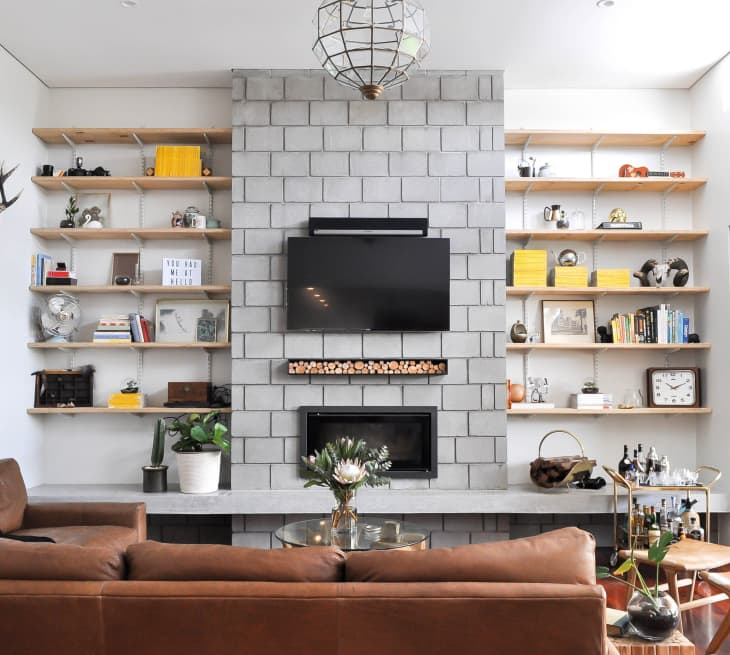What’s Worth It? Choosing Between a Higher- and Lower-Priced TV (That Look Exactly the Same to You)
Two TVs. Their boxes are full of confusing terms and complicated jargon. And their prices are night and day. How do you know if the pricey TV is worth the money? What are you really getting for the upgrade? It’s hard to know for certain while you’re standing in the store, and online reviews just make things even more byzantine. At the end of the day, it can be tough to know what you’re paying for when you’re buying a TV. So we’re putting two sets head to head—one under $500 and one over $2,000—to look at their differences and similarities for the money.
For more content like this follow
In one corner, theTCL Roku 3750 LEDfor $448, and in the other corner, theLG B6 OLEDfor $2,497.
Both are 55 inches, and both have a high definition display. They each have cool remotes, and smart technology built right in. So what do you get for the extra cash? Have a look at some of the differences below—this comparison doesn’t hold true for every pair of high and low TVs, but it’s a good idea of the jumps in quality and features you can expect for the money. You can decide for yourself who wins the match, and whether the price jump is worth it.
Looks
The TCL has a much more noticeable bezel, and a thicker body overall at 3.5″. So it will definitely protrude when wall-mounted. The LG, on the other hand, has a ridiculously thin bezel and the overall thickness of the TV itself is an impressive 1.9″. Both aren’t designed to make accessing the inputs on the back easy once it’s wall-mounted, so you’ll have to take the TV down if you add a component later.
Picture Quality
The TCL has an impressive picture quality for the money. It’s an LED screen with 1080p resolution, which puts it in the middle-to-high end of what’s on the market right now. The picture quality does degrade if you try to view it from the side. The refresh rate (60 Hz) is on the lower end, and that affects the smoothness of motion on the screen—for the money, it’s good, but you may notice some blurring or pixelation during fast-moving action scenes, sports or gaming.
The LG is the top of the line: OLED (a richer, more cinematic color experience than LED), 4K (8 times as many pixels as the 1080p) and HDR (an additional upgrade to picture quality). Plus with a 120 Hz refresh rate, the motion is smoother. The picture quality is definitely where you’re going to see your money well spent.
Inputs
The LG only has one more HDMI port and 2 more USB ports than the TCL Roku TV. If you have a ton of components to attach to it, you might notice a difference, but with the Roku baked into the TV itself, that’s one less thing to plug in. One important thing that the LG has that the TCL doesn’t is an ethernet port— with all that streaming content, it would be nice to have the option to plug into the wall, instead of doing it all over Wi-Fi.
Smarts
With Wi-Fi connectivity, an intuitive interface and Roku’s 3,000 streaming channels all built into the TV itself, the TCL has plenty of smarts for the money. Roku has more apps than any other platform, including obvious favorites like Netflix, Hulu and HBO Go, so you’ll never be at a loss for what to watch. Other impressive features include an app that you can use as a remote control, and the ability to listen to the TV privately by plugging your headphones into your smartphone jack. Plus, this is one of the most updated TVs around, so it’s constantly being improved and refined.
LG’s TV has some serious smarts too—with new apps being added to its WebOS 3.0 interface all the time (which already includes Amazon Video, Netflix, YouTube and more). The remote makes it incredibly easy to use—you can use its directional buttons, as well as point it at the screen, or use voice commands to find the programming you’re interested in. LG has a compatible app that also lets you control the TV from your smartphone, but it’s “Magic Mobile Connection” allows you to select favorite apps on your phone, then cast them to the TV for use on the big screen.
To wrap up, it’s important to remember that the specifics of these two TVs might be different than others in their price range, and TVs in the lower end are getting better and better. When you upgrade in price, you’re usually getting a sexier package, some other bells and whistles, and superior picture quality.
If you’re just looking for something to re-watch “The Office” (both American and British versions) on your down time, it might not be necessary to splurge on top of the line, but if you’re an avid movie and sports watcher and are looking for crisp, clear picture and a thin profile, the upgrade might be worth it to you.
What do you think—go high or go low? Let me know in the comments.
Looking for more TV buying advice? Don’t miss the rest of the Ultimate Guide to Buying a TV series:

